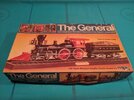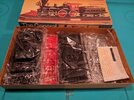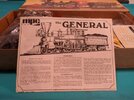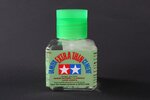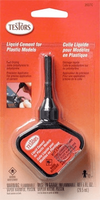Welcome to the Herd, Bob! Yeah, the General is a classic!
As far as glues go, as Momo suggests, there are very good thin liquid styrene glues available. I use Tamiya's Extra Thin, too. It flows very well, and it's simple to put pieces together and use the brush to flow the liquid into the join, letting capillary action pull it in.
I also have Testor's liquid glue, which comes in a black plastic bottle with a long, fine spout:
View attachment 112875
It works well enough, too. I think I picked it up to try it out. But I'll....stick, with Tamiya's!
I also used Plastruct's products, Weldene and Bondene, when I first starting using liquid cements. They worked OK, too, but again, I found Tamiya's better, when I started using it. Also, Plastruct includes a brush applicator attached to the underside of the jar lid, but it picks up a little tool much of the glue. I learned to let most of it wick away into the jar.
And, I still keep a tube of Testor's tube glue in the tool box. I find that it still has an application. I use it when I want to have a little more adjustment time, and it more of a slow-curing glue. Like installing a joystick in a cockpit, for example, or assembling a styrene figure.
Some modelers use cyano-acrylate glue (CA, superglue). I don't use it to assemble styrene to styrene, but I do use it when gluing different materials together, like resin or metal to styrene. When gluing resin to resin, resin to metal, or metal to metal, I like to use a 2-part epoxy with a 5-minute curing time. I have found it a little stronger than CA glue. I also pin those joins, most of the time, especially if it's a butt join of two flat surfaces, and there are no lugs cast integrally with the part.
And I use white glue (eg, Elmer's) for clear parts, like a windshield or canopy.
Hope that all helps!
Best regards,
Brad
